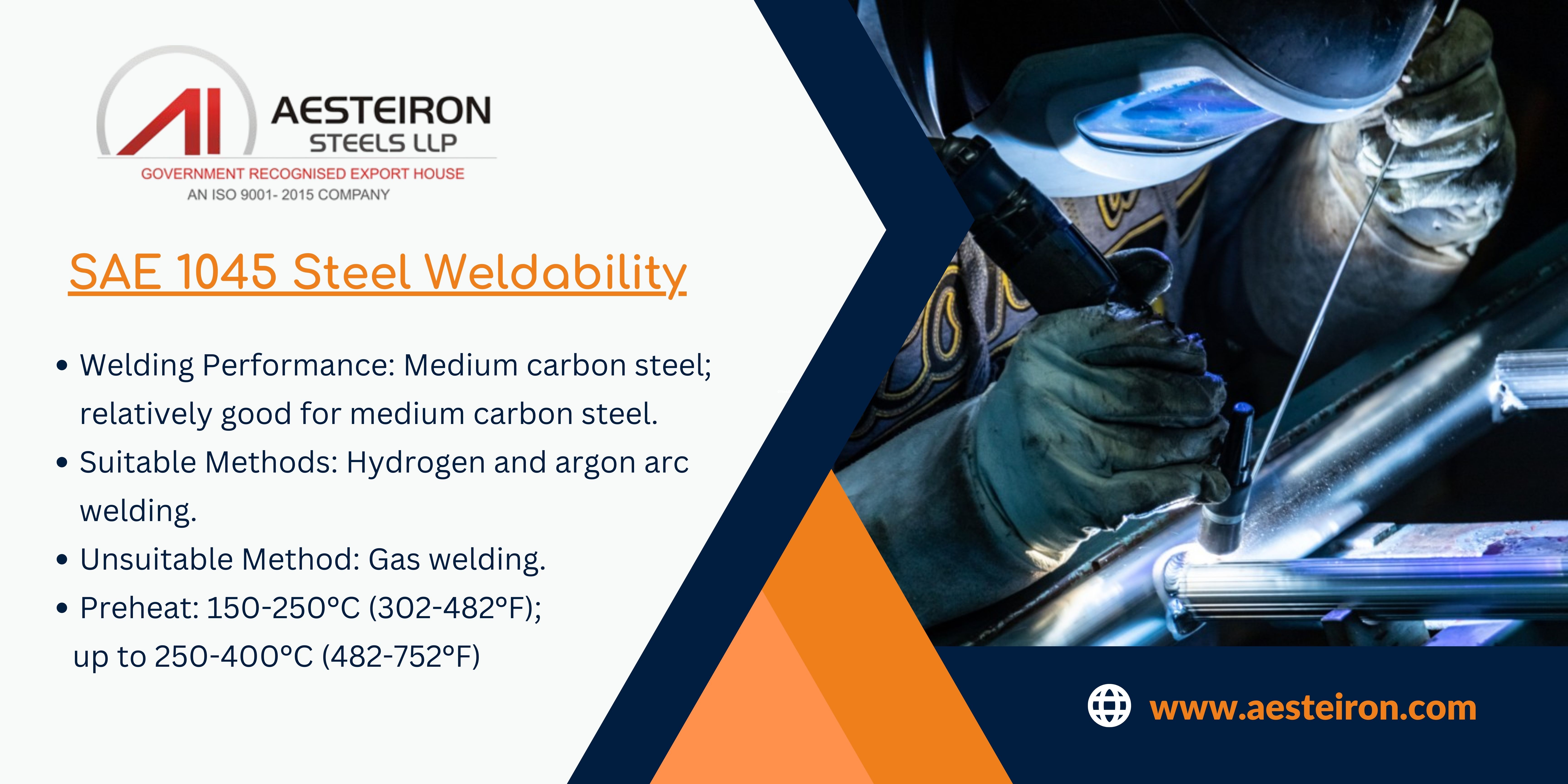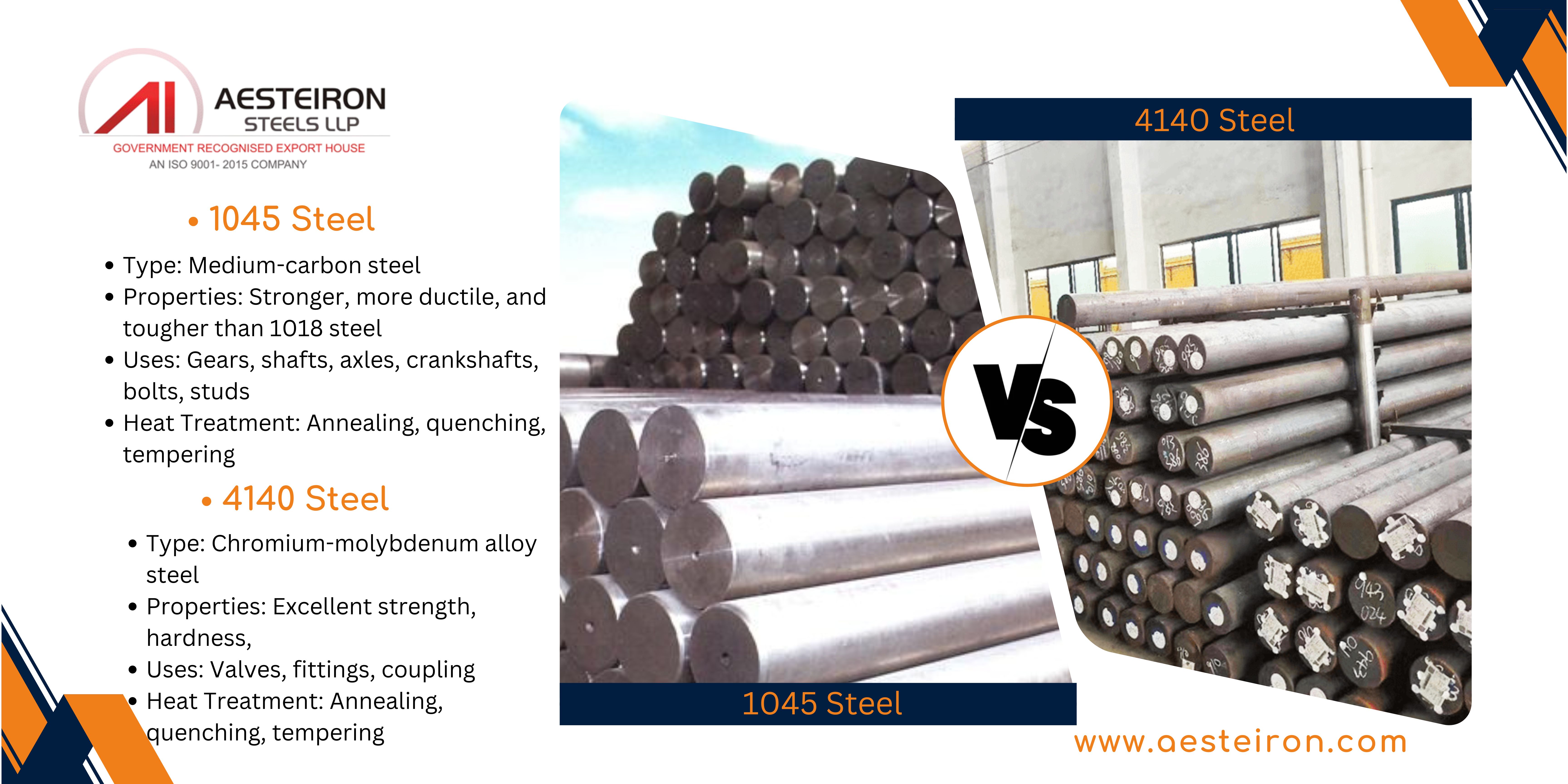Understanding the chemical composition of SAE 1045 steel is crucial as it directly influences the mechanical properties of the material. The following table provides an overview of its chemical composition: Table of Contents Chemical Composition of SAE 1045 Steel One of the key advantages of AISI 1045 steel is its excellent weldability, which allows for high-quality welds that are strong, durable, and safe. Proper welding procedures can prevent damage such as cracks, making it ideal for applications requiring significant structural integrity. Additionally, its good machinability means it can be cut with minimal tools, resulting in a superior surface finish with tight tolerances. This efficiency leads to faster production times and reduced manufacturing costs. Finally, its high strength properties make it both safer and more durable, suitable for construction and applications where heavy loads and harsh conditions are present. Weldability of ASTM 1045 Steel Mechanical Properties of AISI 1045 Steel - Cold Drawn Normalized condition offers several benefits, including enhanced mechanical properties, reduced internal stress, improved machinability, and refined grain structure, making it a preferred choice for many applications. Heat Treatment of DIN 1.1191 Steel SAE 1045 Steel vs. 4140 Steel Properties of Quenched and Tempered SAE 1045 Steel The following equivalent grades of Steel 1045 provide insight into how this material is categorized under different international standards. Equivalent Grades of AISI 1045 Steel Thermal Properties of SAE 1045 Steel Tolerances of AISI 1045 Carbon Steel At these temperatures, the material softens, improving its machinability and enhancing its malleability. After annealing, the material is cooled gradually in a furnace to achieve the desired mechanical properties tailored to specific applications. Annealing Process of CK45 Steel Quality Assurance for Steel 1045 This material tends to corrode easily when exposed to moisture or aggressive environments like acids and salts. To mitigate corrosion, additional protective coatings or regular maintenance are often necessary. Corrosion Resistance of AISI 1045 Steel Electrical Characteristics of JIS S45C Steel Applications of SAE 1045 Steel condensator and evaporator condensator of car Xinxiang Yukun Refrigeration Technology Co.Ltd , https://www.yukunevaporator.com
Grade
C
Si
Mn
P
S
1045
0.43-0.50
0.15-0.35
0.60-0.90
≤0.04
≤0.05
AISI 1045 Steel Offers Excellent Weldability, Machinability, and High Strength

Aspect
Details
Welding Conditions
Proper welding techniques are required for successful joining.
Electrodes
Use low-hydrogen electrodes to minimize defects.
Pre-heating
Pre-heat the workpiece to 200°C – 300°C (392°F – 572°F).
Welding Temperature
Maintain pre-heat temperature throughout the welding process.
Cooling
Cool the material slowly using sand or ash to manage the cooling rate.
Stress Relief
Perform stress relief at 550°C – 660°C (1022°F – 1220°F).
Mechanical Properties
Hardness, Brinell
Hardness, Rockwell B
Hardness, Vickers
Tensile Strength, Yield
Tensile Strength, Ultimate
Elongation at Break (in 50 mm)
Reduction of Area
Poisson’s Ratio
Modulus of Elasticity
Bulk Modulus
Shear Modulus
Metric
184
84
170
310 MPa
565 MPa
16.00%
40.00%
0.29
200 GPa
140 GPa
80 GPa
Imperial
184
84
170
45000 psi
81900 psi
16.00%
40.00%
0.29
29000 ksi
20300 ksi
11600 ksi
DIN 1.1191 Steel is Typically Available in Black Hot Rolled or Normalized Forms
Process
Heating Temperature
Cooling Method
Forging
850°C – 1250°C (1562°F – 2282°F)
Cool in a furnace
Annealing
800°C – 850°C (1472°F – 1562°F)
Cool in a furnace
Normalizing
870°C – 920°C (1598°F – 1688°F)
Cool in still air
Stress-Relieving
550°C – 660°C (1022°F – 1220°F)
Cool in still air
Hardening
820°C – 850°C (1508°F – 1562°F)
Quench in water or brine
Tempering
400°C – 650°C (752°F – 1202°F)
Cool in still air

Property
SAE 1045 Steel
SAE 4140 Steel
Type
Carbon Steel
Alloy Steel
Carbon Content
0.43-0.50%
0.40%
Manganese Content
0.60-0.90%
0.75-1.00%
Chromium
None
Present
Molybdenum
None
Present
Iron (Fe)
98.51-98.98%
96.79-97.78%
Phosphorus (P, max)
0.04%
0.035%
Sulfur (S, max)
0.05%
0.040%
Strength
Good strength and impact resistance
Superior hardness and toughness
Common Uses
Machinery parts, automotive components
Axles, gears, shafts
Characteristics
Moderate hardness and strength
Enhanced wear resistance and toughness
Section Size (mm)
Up to 16mm
17-44 mm
41-100 mm
Tensile Strength (MPa)
700-850
650-800
630-780
Yield Strength (MPa)
500
430
370
Impact Charpy (J)
30
30
30
Elongation in 50 mm (%)
14
16
7
Hardness (HB)
210-245
195-235
185-230
Explore the Equivalent Grades of Steel 1045
Country
USA
British
Japan
Australia
Standard
ASTM A29
EN 10083-2
JIS G051
AS 1442
Grades
1045
C45/1.1191
S45C
1045
Properties
Metric
Imperial
Thermal Conductivity
51.9 W/mK
360 BTU in/hr.ft².°F
Thermal Expansion Coefficient (@0.000-100°C/32-212°F)
11.2 µm/m°C
6.22 µm/m°C
Surface Finish
Black-Forged
Turned
Black-Rolled
Peeled
Ground
Polished
Cold Drawn
Tolerance
(0, +5mm)
(0, +3mm)
(0, +1mm)
Best H11
Best h9
Best h11
Best H11
Annealing Temperature for JIS S45C Grade Ranges From 790-870 °C
Aspect
Details
Purpose of Annealing
Softens surface hardness for improved machinability
Annealing Temperature
820°C to 840°C
Holding Time
Sufficient time at annealing temperature
Measured Surface Hardness
Typically below 200 HBW (Brinell Hardness)
SAE 1045 Steel is Not Highly Resistant to Corrosion in Harsh Environments

Feature
1045 Steel
Primary Composition
0.45% Carbon, Iron
Corrosion Resistance
Low
Protective Layer
Does not form a protective chromium oxide layer
Exposure to Harsh Environments
Prone to rust and corrosion in saltwater, acids, and bases
Maintenance Requirements
Requires coating or treatment for better resistance
Typical Applications
Structural components, machinery, automotive parts
Electrical Properties
Metric
English
Comments
Electrical Resistivity
0.0000162 ohm-cm @ 0.000 °C
0.0000162 ohm-cm @ 32.0 °F
Annealed specimen
0.0000223 ohm-cm @ 100 °C
0.0000223 ohm-cm @ 212 °F
Annealed specimen
Pins
Gears
Rams
Ratchets
Bolts
Light Gears
Rolls
Shafts
Sockets
Spindles
Axles
Worms
Crankshafts
Studs
Guide Rods
Torsion Bars
Connecting Rods
Hydraulic Clamps
SAE 1045 Steel Chemical Composition
Certainly! Here's a revised and expanded version of the content in English:
---
---
This rewritten version maintains the original information while expanding on certain sections to reach the desired word count.
Next Article
SAE 1045 Steel Chemical Composition